Some of the links in this post may be affiliate links.
With so many different Calathea varieties out there, it’s hard to choose a favorite. Keep reading to view 39 different types of Calatheas, and at the end, I’ll go over some basic care tips so that you can keep your Calatheas in tip-tip shape, all while minimizing crispy brown edges.
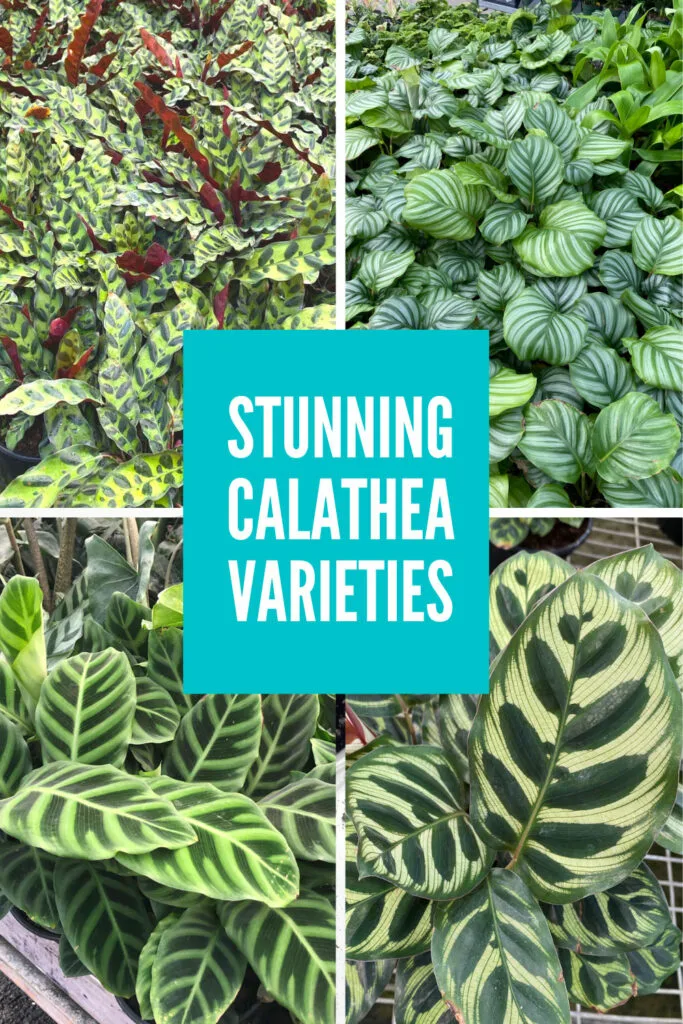
Table of Contents
CALATHEA VARIETIES
Many species in the Calathea genus have been reclassified into the Goeppertia genus and I’ve noted those and cross referenced the Kew Gardens online database for accuracy. Either way, they are in the Marantaceae family of prayer plants.
Here are some gorgeous types of Calathea. Some are popular species and easy to find, and many are rare, but the hunt makes it all part of the fun.
1. Calathea ornata
Reclassified as Goeppertia ornata, this beauty is commonly known as Pinstripe Plant for obvious reasons. It is native to Colombia and Venezuela.
Its long, dark green leaves with pink stripes (and maroon undersides) are striking.
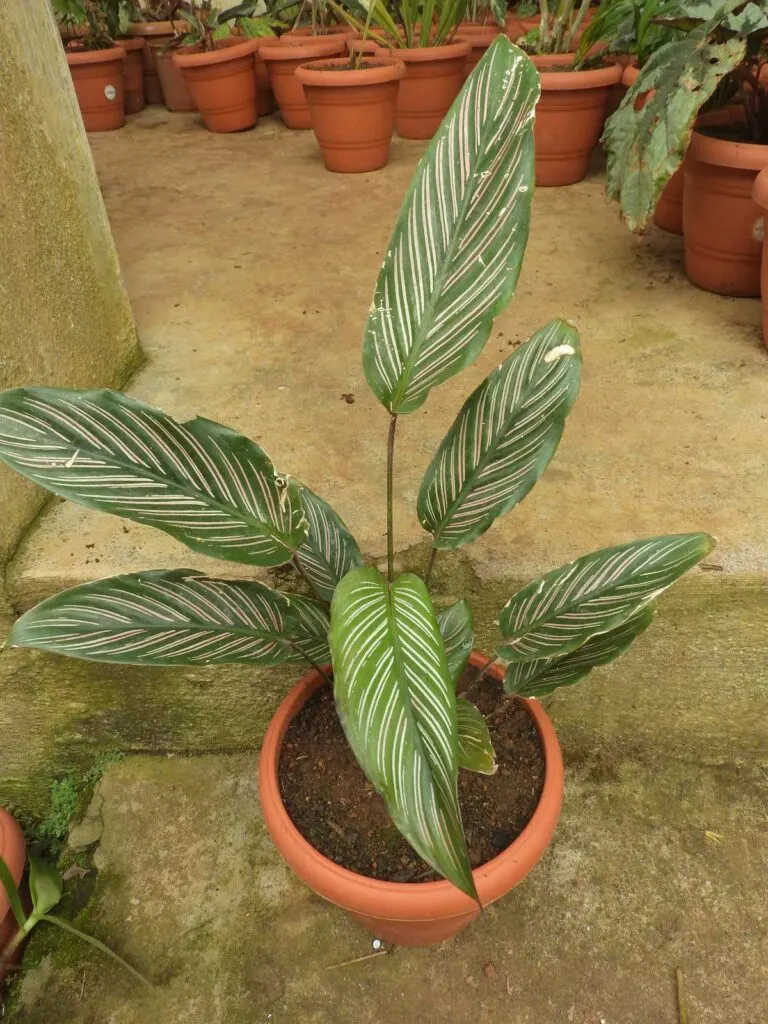
2. Calathea lancifolia
Previously known as Calathea lancifolia, the correct botanical name for this plant is Goeppertia insignis, and is commonly known as Rattlesnake Plant.
Few plants can beat the foliage markings of this Brazilian species.
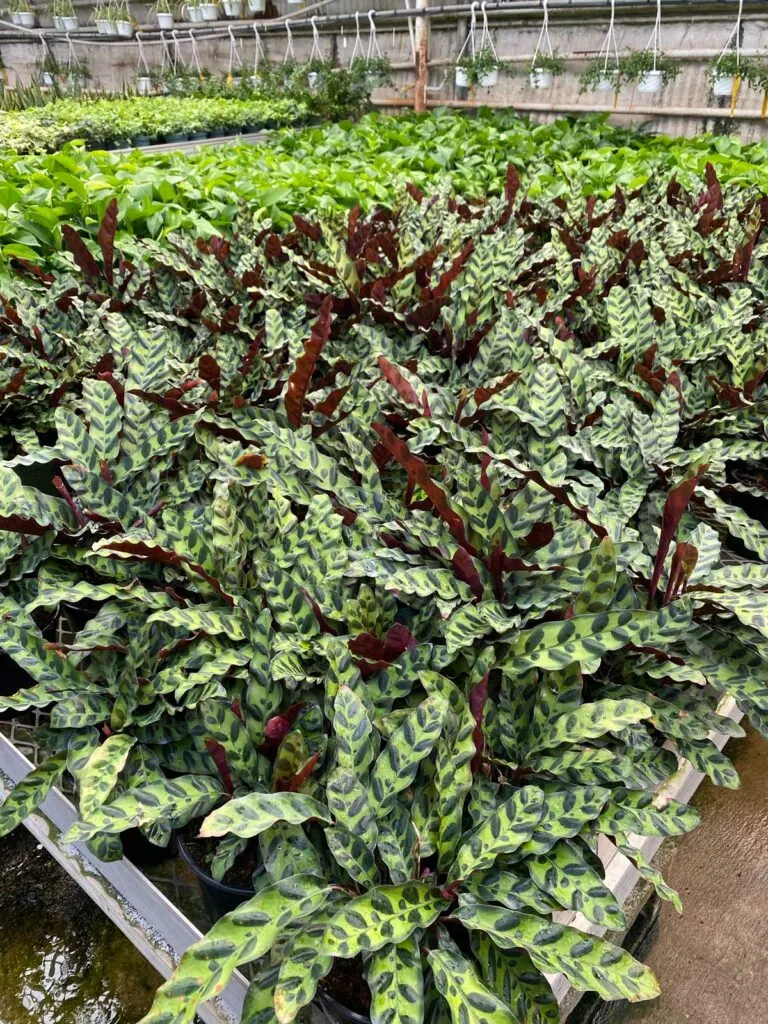
The Rattlesnake Calathea is one of my favorites, and it is among the most forgiving in the genus.
3. Calathea orbifolia
Reclassified as Goeppertia orbifolia, this is another beauty. Its gorgeous, bright green leaves have subtle silvery stripes.
Native to eastern Brazil, these plants can get quite large when mature (up to 2 to 2.5 feet).
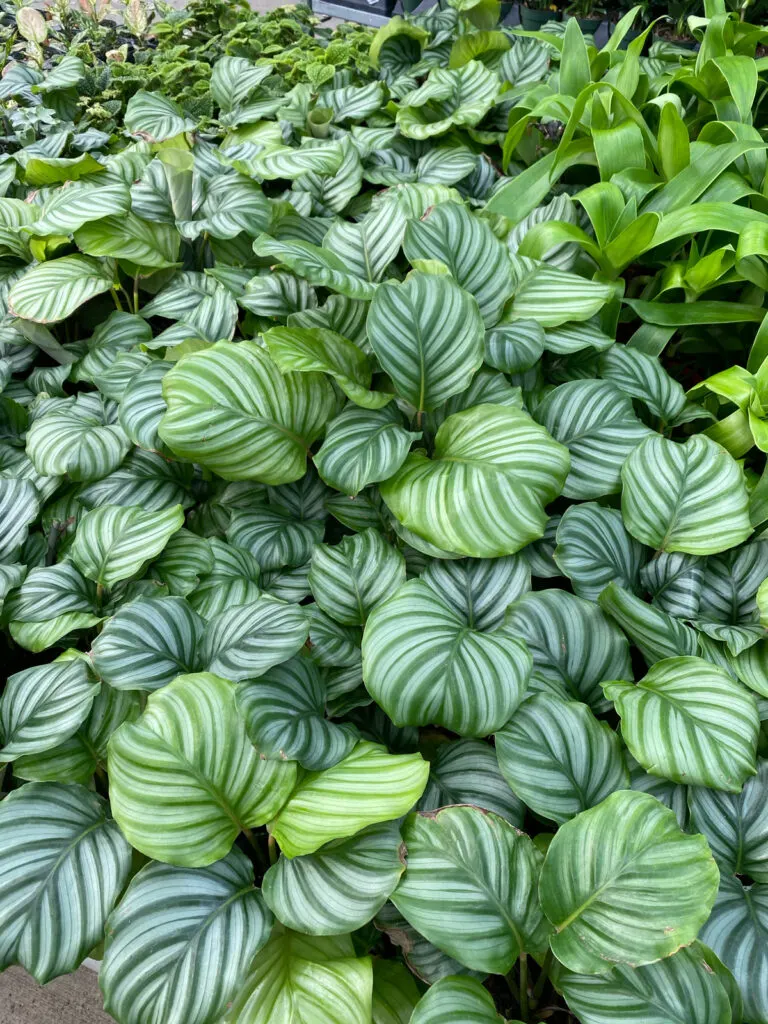
4. Calathea makoyana
Reclassified as Goeppertia makoyana, this Brazilian native is commonly known as Peacock Plant due to its striking resemblance to peacock feather markings.
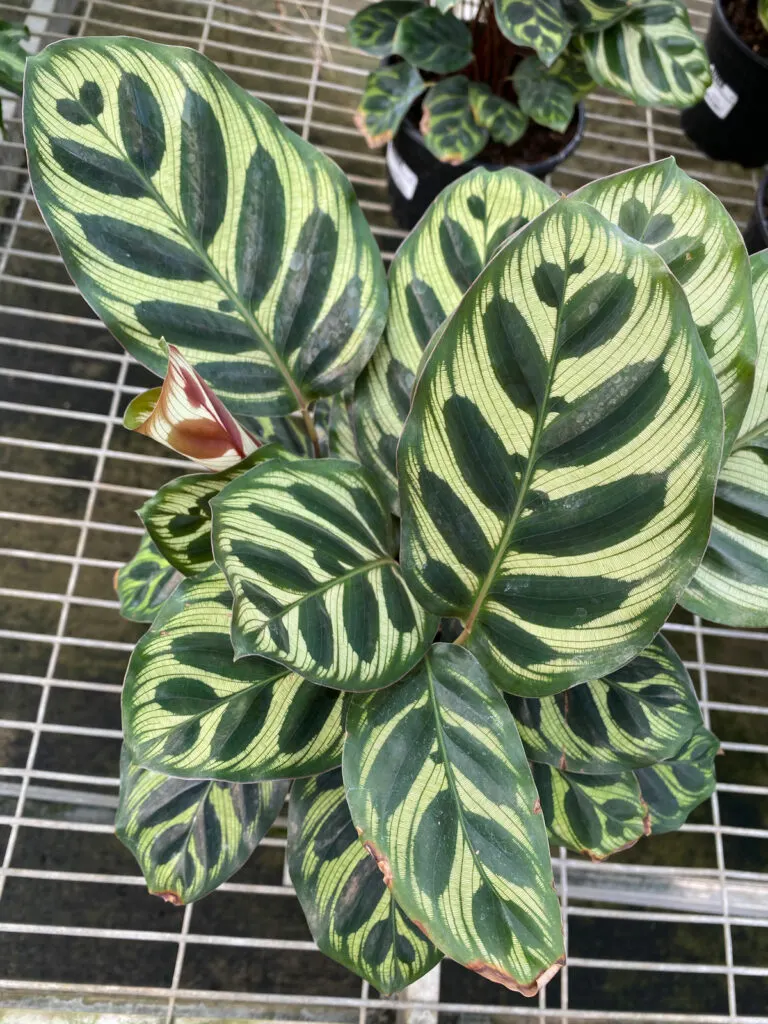
5. Calathea roseopicta
Correctly named Goeppertia roseopicta, there are many cultivars of this species with striking foliage.
Native to western South America and western Brazil.
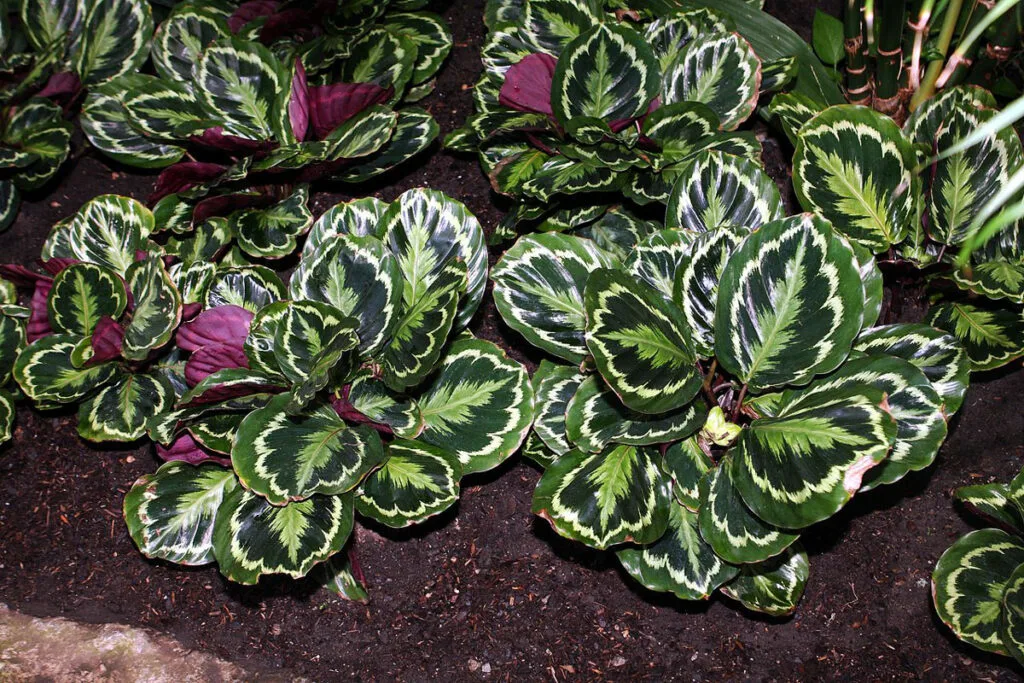
6. Calathea zebrina
Reclassified as Goeppertia zebrina, this species gets its name due to its zebra-like stripes on the foliage.
It is native to Brazil.
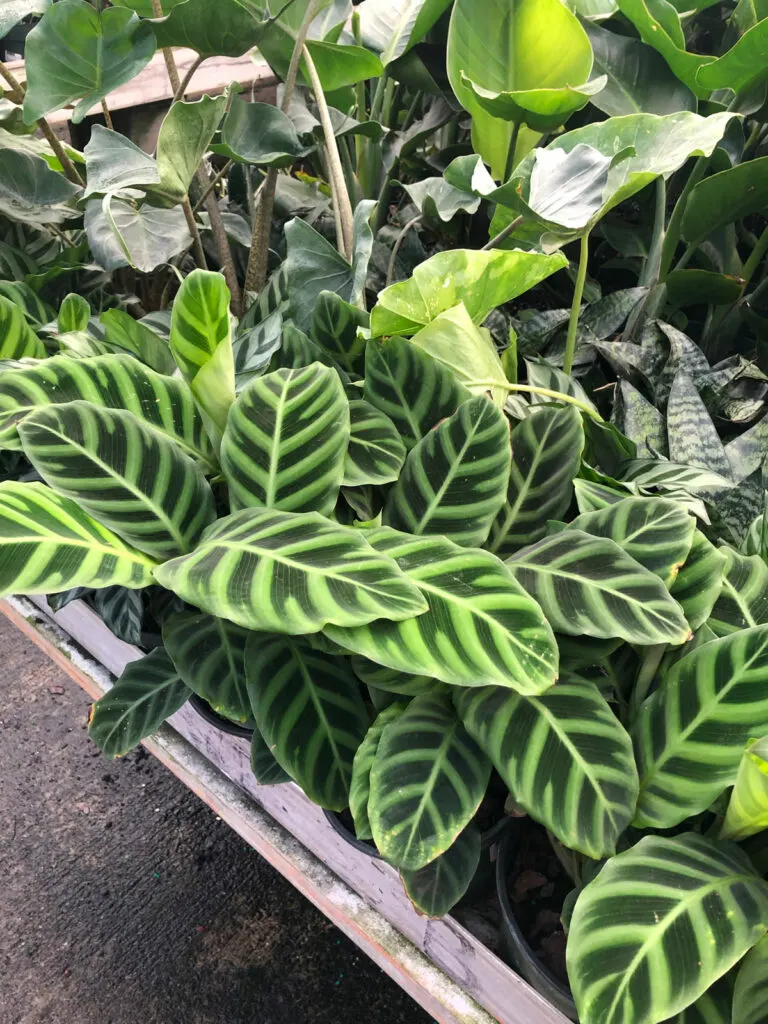
7. Calathea crocata
Reclassified as Goeppertia crocata, this native of Brazil is commonly known as Eternal Flame Plant because of its brilliant orange flowers.
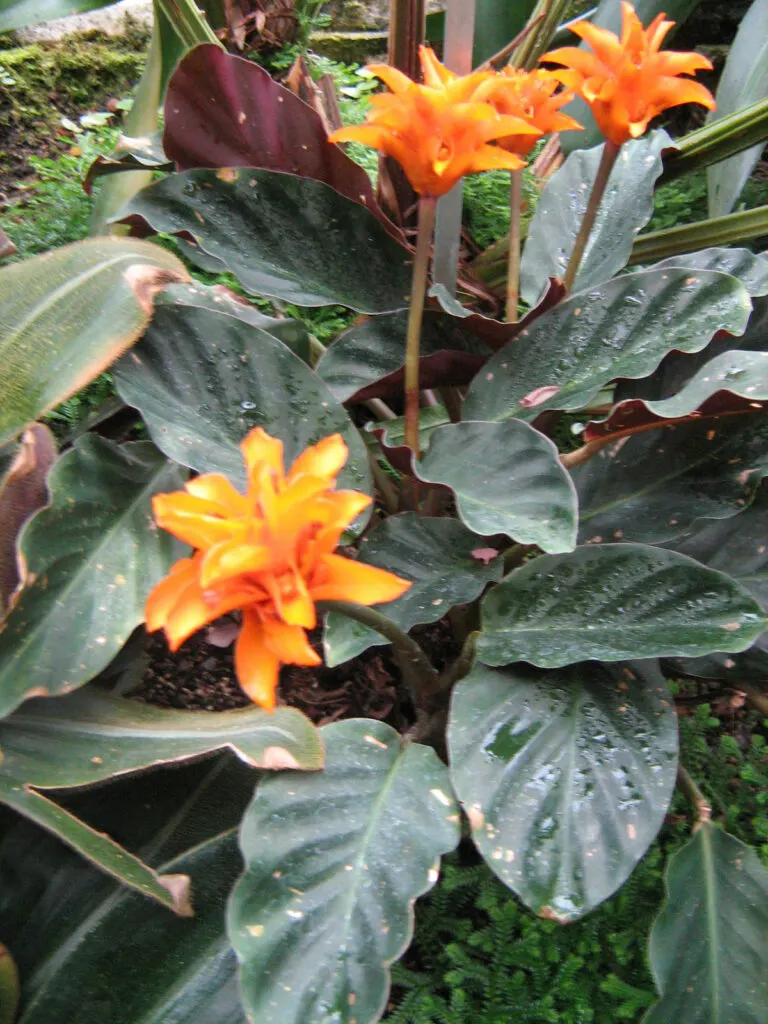
8. Calathea warscewiczii
Native to Central America, Geoppertia warszewiczii is commonly know as the Jungle Velvet plant.
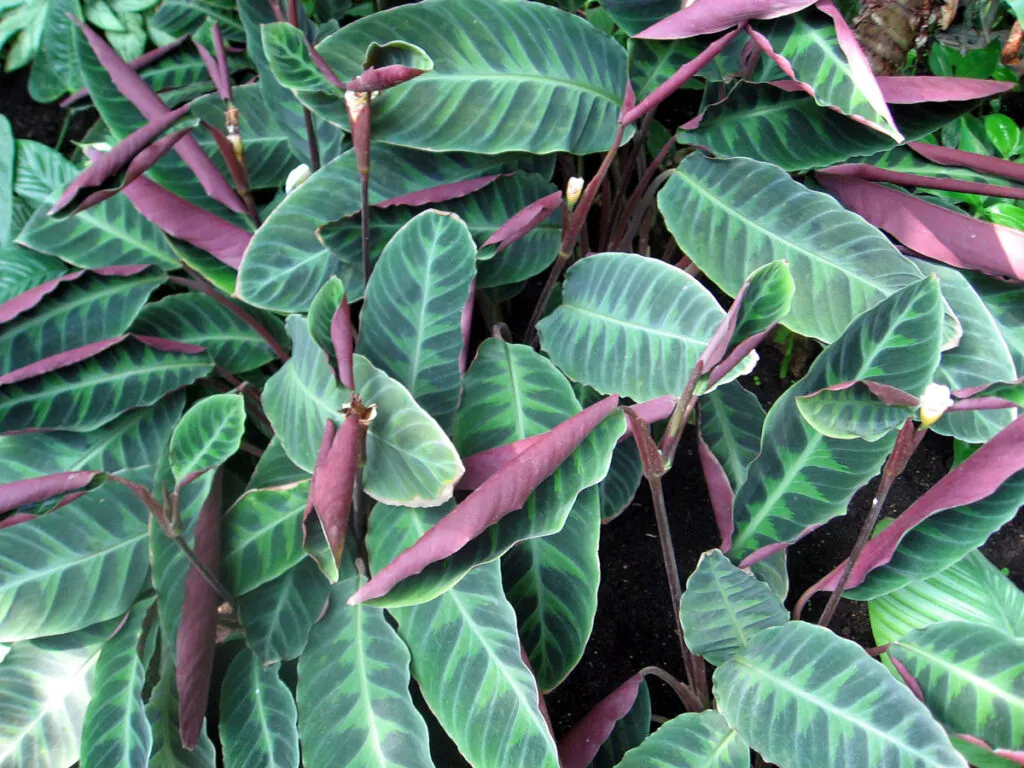
9. Calathea musaica
The correct botanical name for this plant is Goeppertia kegeljanii and is one of the most stunning foliage plants. It is also sometimes incorrectly known as Calathea bella.
This Brazilian native is commonly called Network Plant due to its intricate and fine patterns on the foliage.
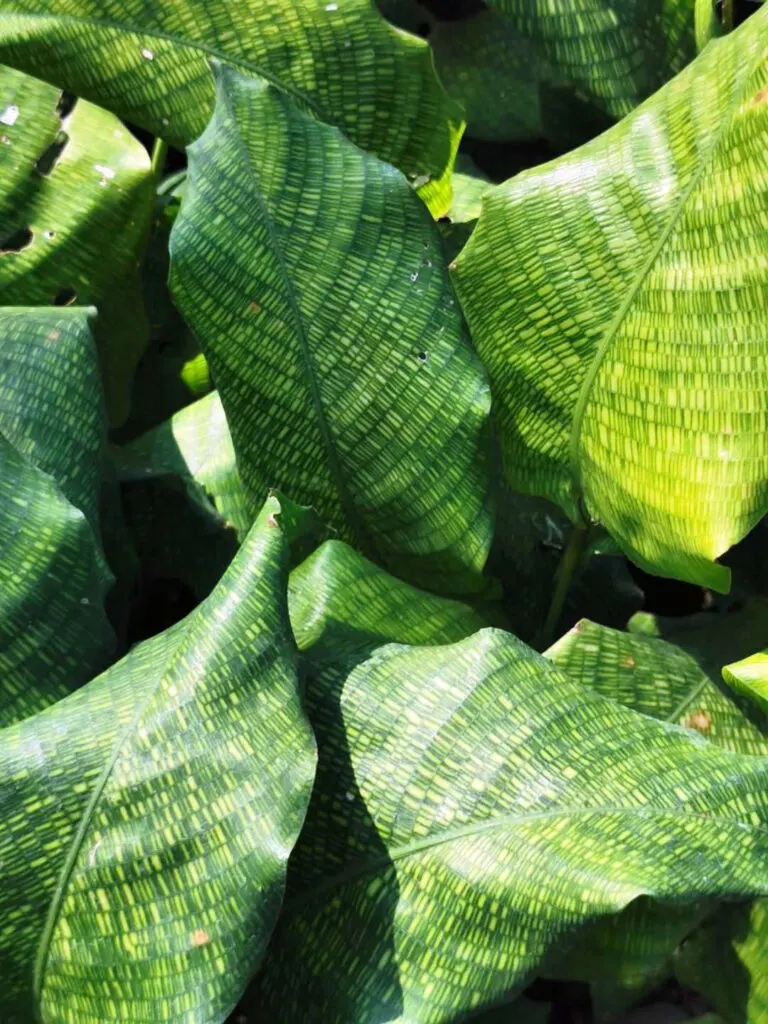
10. Calathea rufibarba
Native to Brazil, Goeppertia rufibarba is the correct name for this plant. The foliage is not as striking as other Calathea species, but it is unique in that the undersides of the leaves and stems are covered in a hair-like fuzz.
It has many common names including Velvet Calathea and Furry Feather plant.
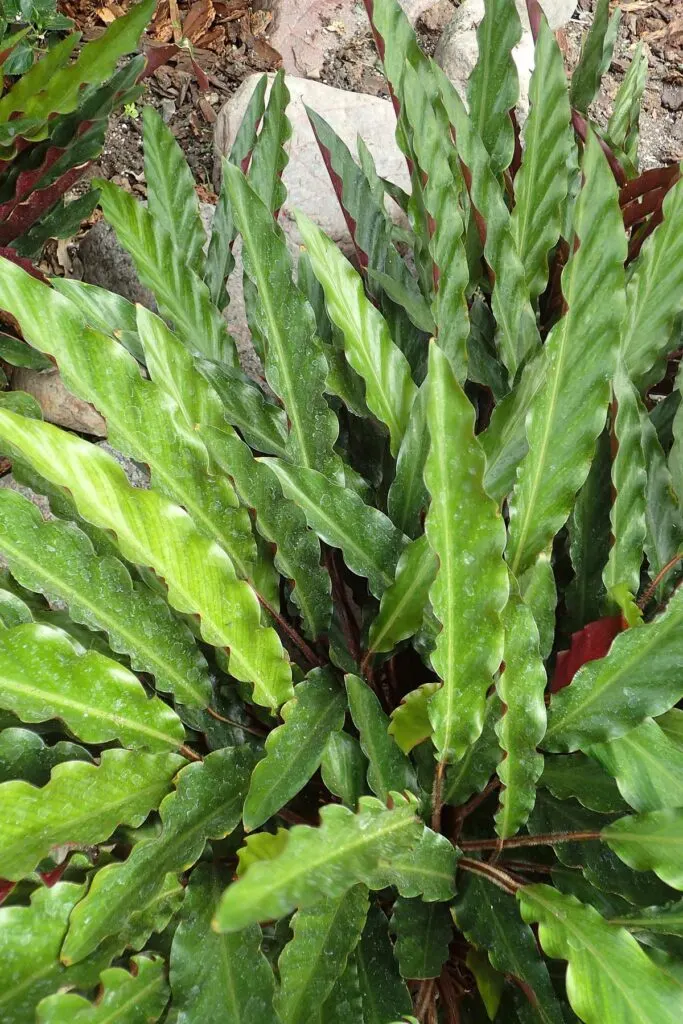
11. Calathea marantifolia
The native range of Goeppertia marantifolia is Central America to Ecuador.
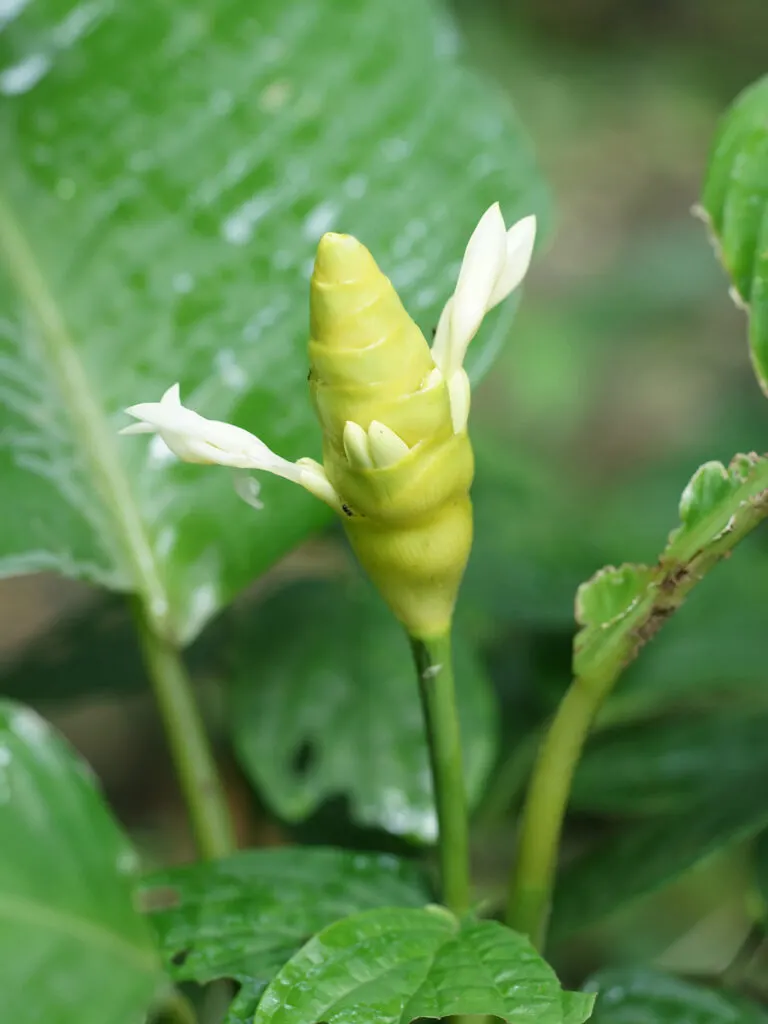
12. Calathea bachemiana
Goeppertia bachemiana is native to Brazil.
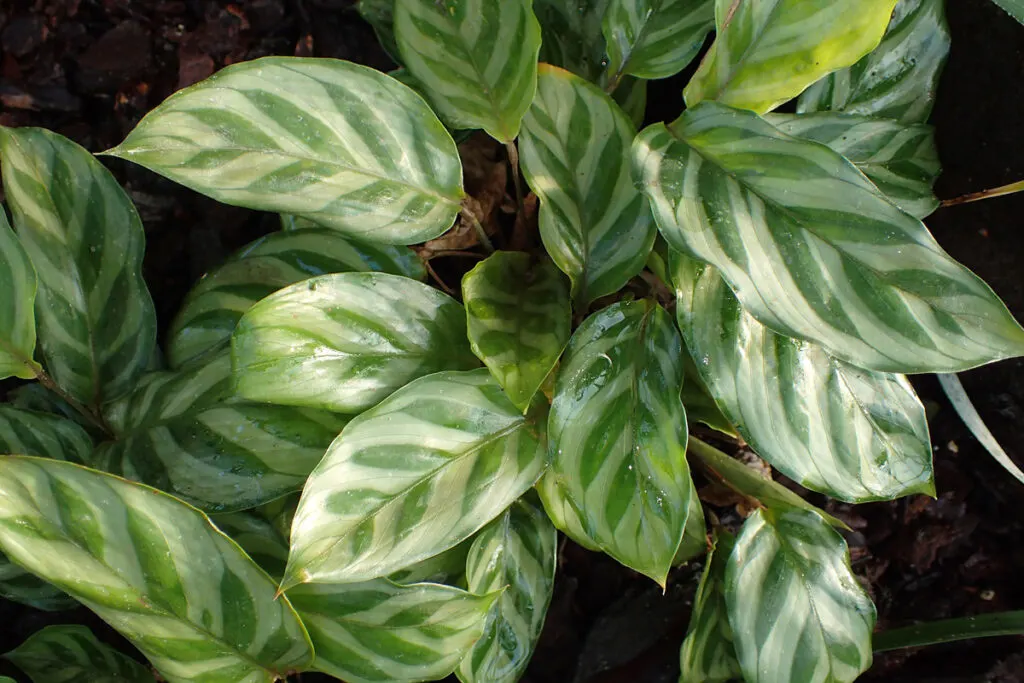
13. Calathea loeseneri
Commonly known as the Brazilian star calathea, the native range of Goeppertia loeseneri ranges from western South America to northern Brazil.
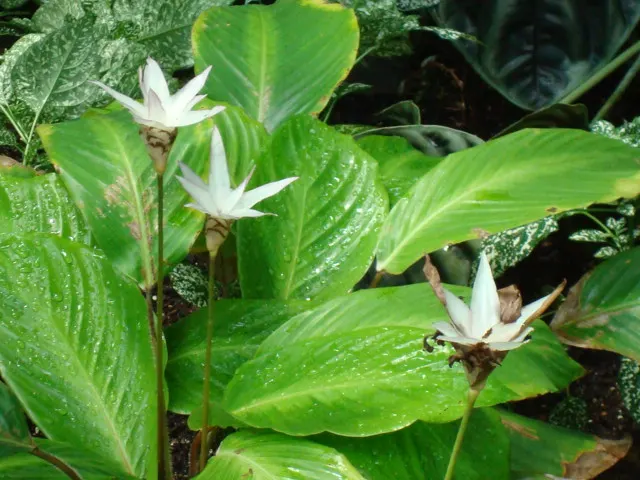
14. Calathea latifolia
The native range of Goeppertia latifolia ranges from Panama to Ecuador and Trinidad.

15. Calathea louisae
Native to Brazil, Goeppertia louisae is a beautiful species almost appears like it’s hand painted, and is sometimes commonly named Thai Beauty.
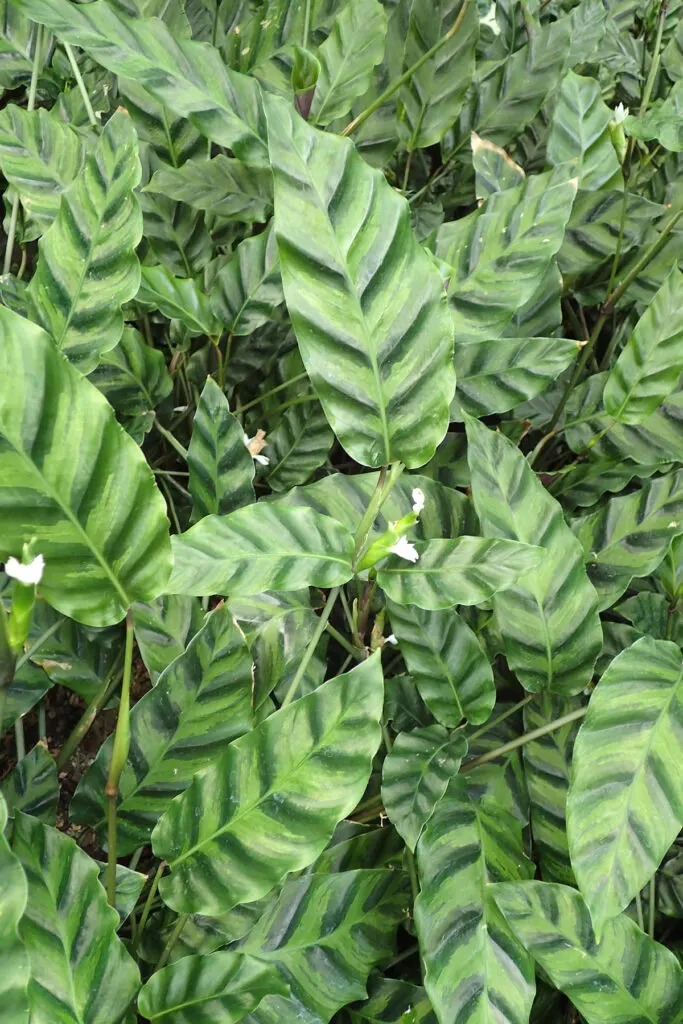
16. Calathea micans
Goeppertia micans is native to much of Mexico and tropical South America. It is a more compact size than many other species in the same genus.
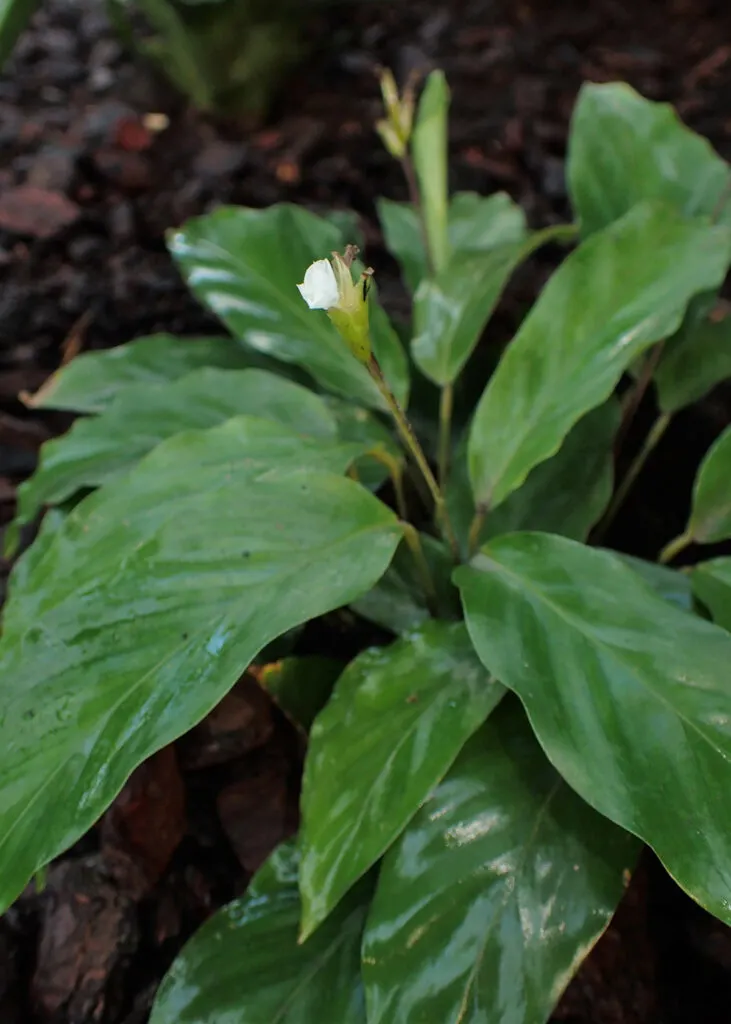
17. Calathea lutea
The correct botanical name of this species is indeed Calathea lutea. Native to southern Mexico to much of tropical South America, it is sometimes called Cigar Plant, Cigar Calathea, Mexican Cigar Plant, and Cuban Cigar Plant.
This plant is a giant, and can grow upwards of 3 to 4 meters tall. It is also used to treat unspecified medicinal disorders.
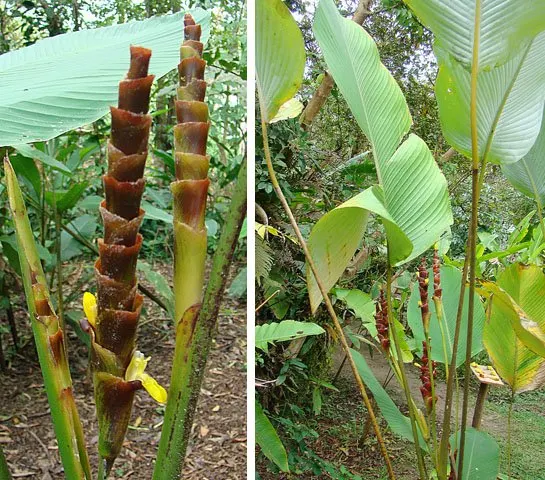
18. Calathea lasiostachya
The accepted name is truly Calathea lasiostachya, and this plant is native to Nicaragua and Panama.
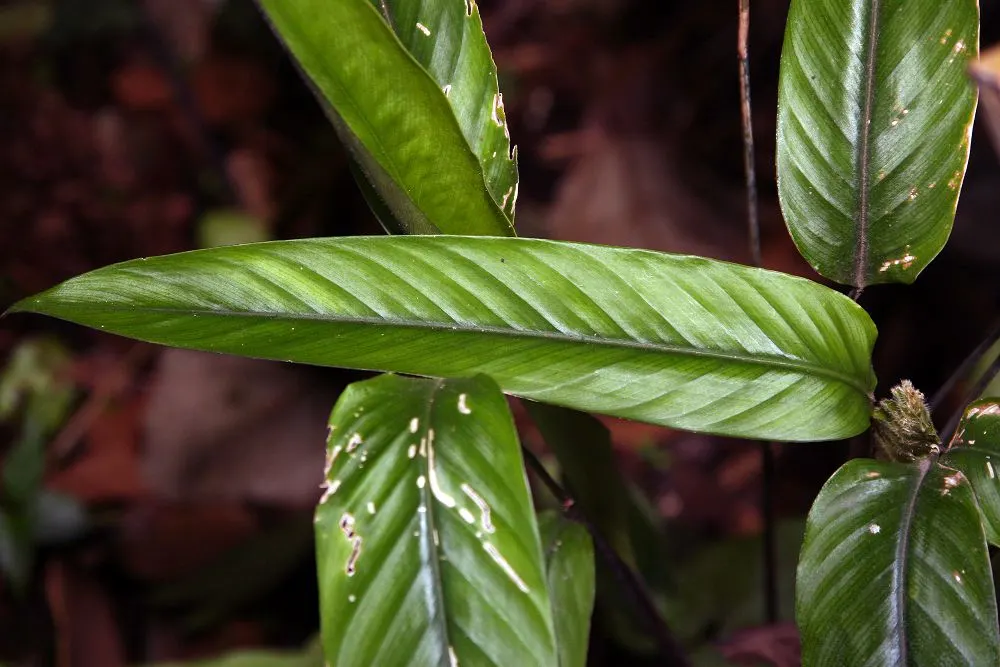
19. Calathea majestica
Correctly classified as Goeppertia majestica, this plant is native to western South America as well as northern Brazil and is commonly known as White Star Plant.
Often mistaken for Goeppertia ornata (Pinstripe Calathea).
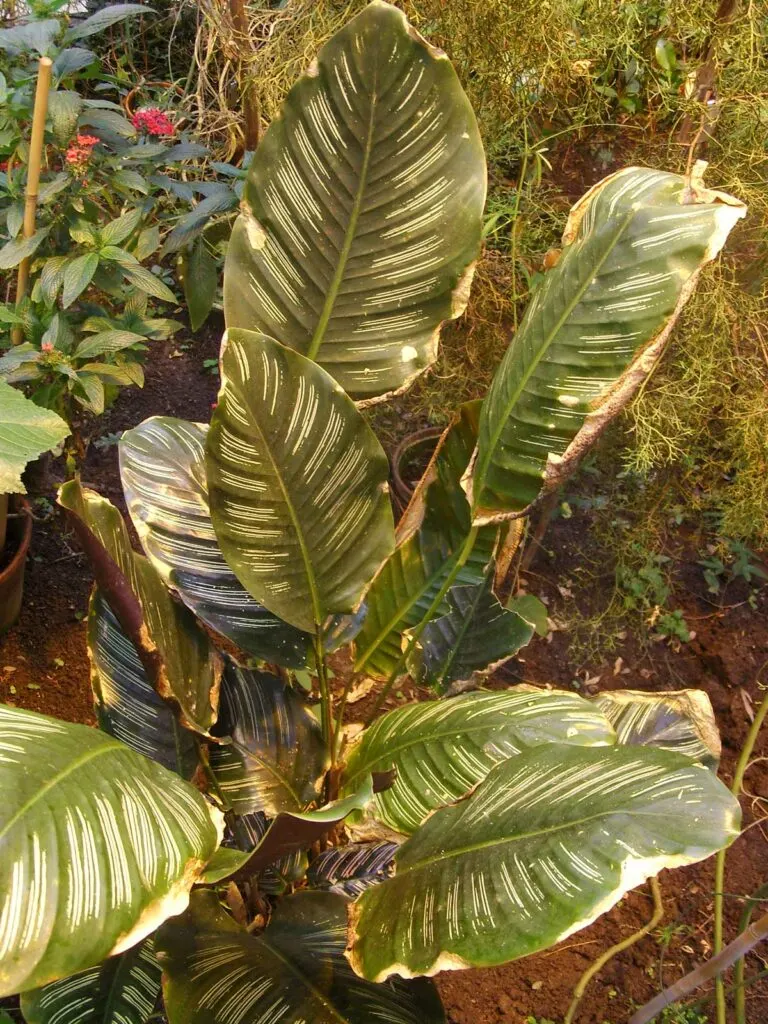
20. Calathea gymnocarpa
Goeppertia gymnocarpa hails from Nicaragua to Colombia.
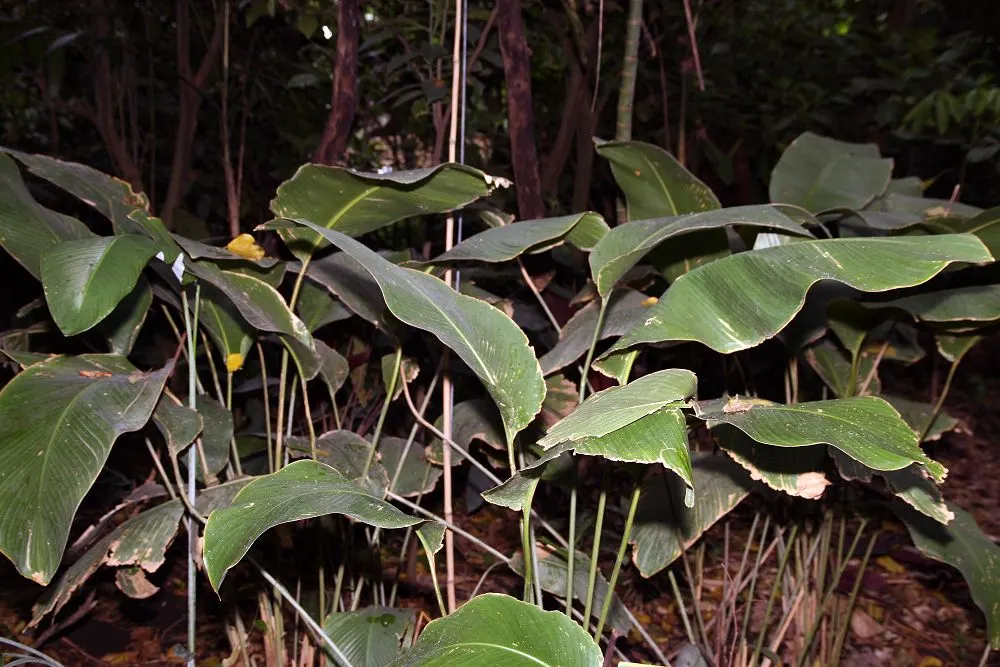
21. Calathea fasciata
Native to northeast Brazil, Goeppertia fasciata is a stunner! It reminds me of Goeppertia orbifolia but with darker leaves and more pronounced markings.
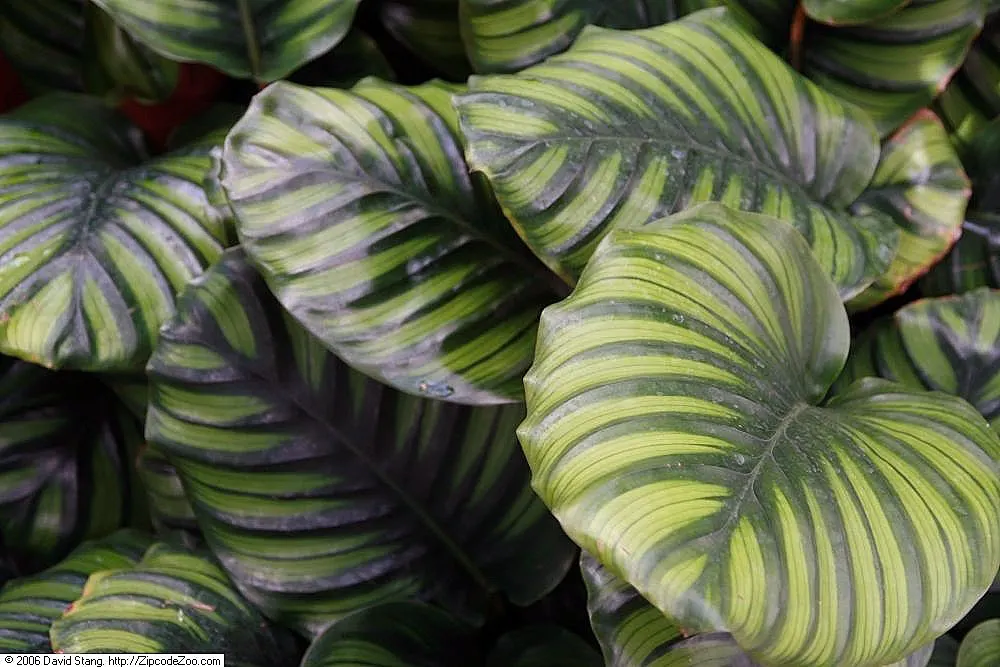
22. Calathea ecuadoriana
Like the species name implies, Goeppertia ecuadoriana is native to Ecuador.
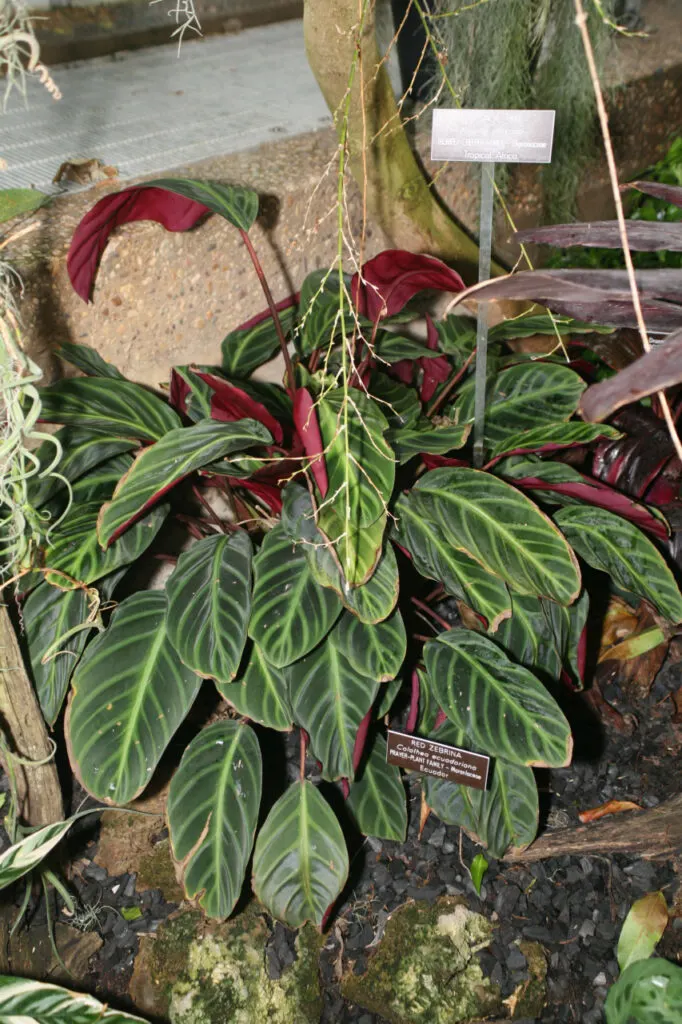
23. Calathea albertii
Correctly identified as Goeppertia albertii, this species is native to Brazil.
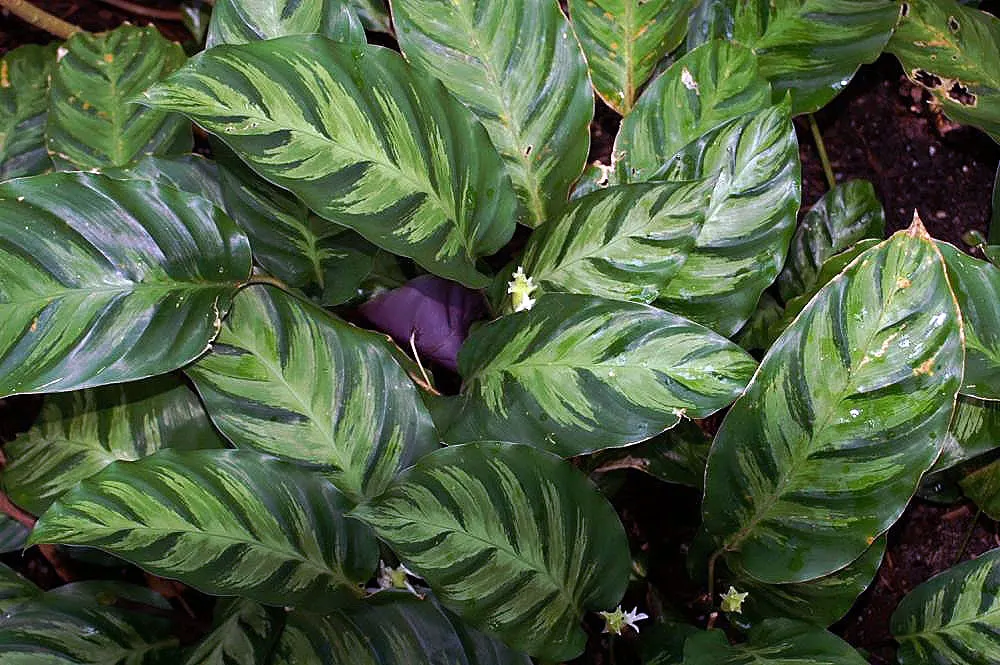
24. Calathea crotalifera
This plant is indeed a Calathea species, and it is native to central Mexico as well as much of South America.
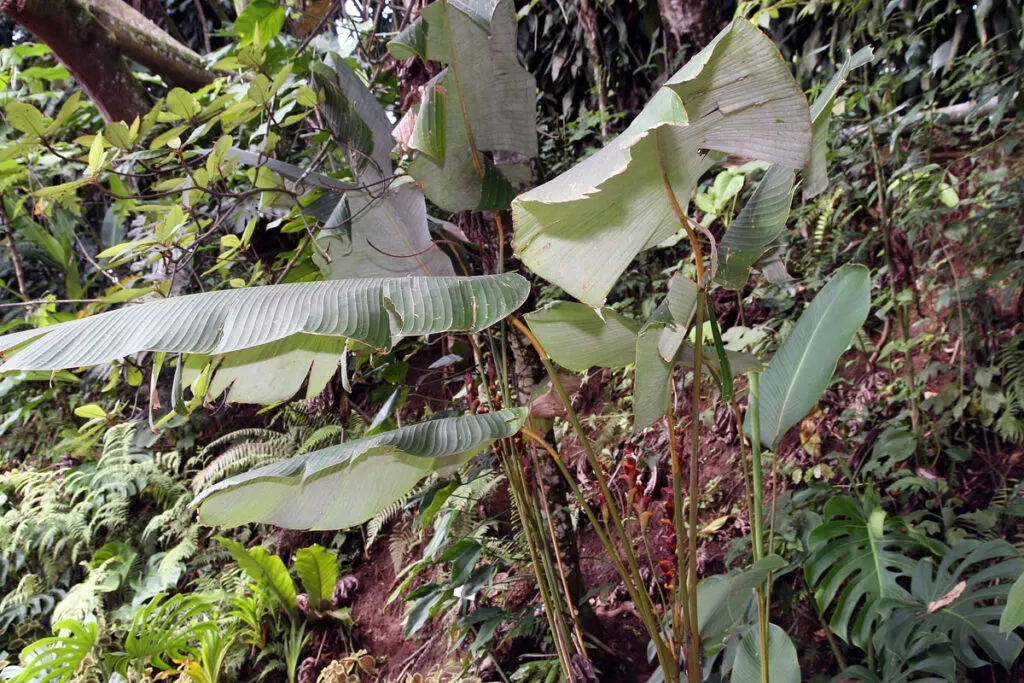
25. Calathea variegata
Goeppertia variegata is native to Trinidad and much of South America.
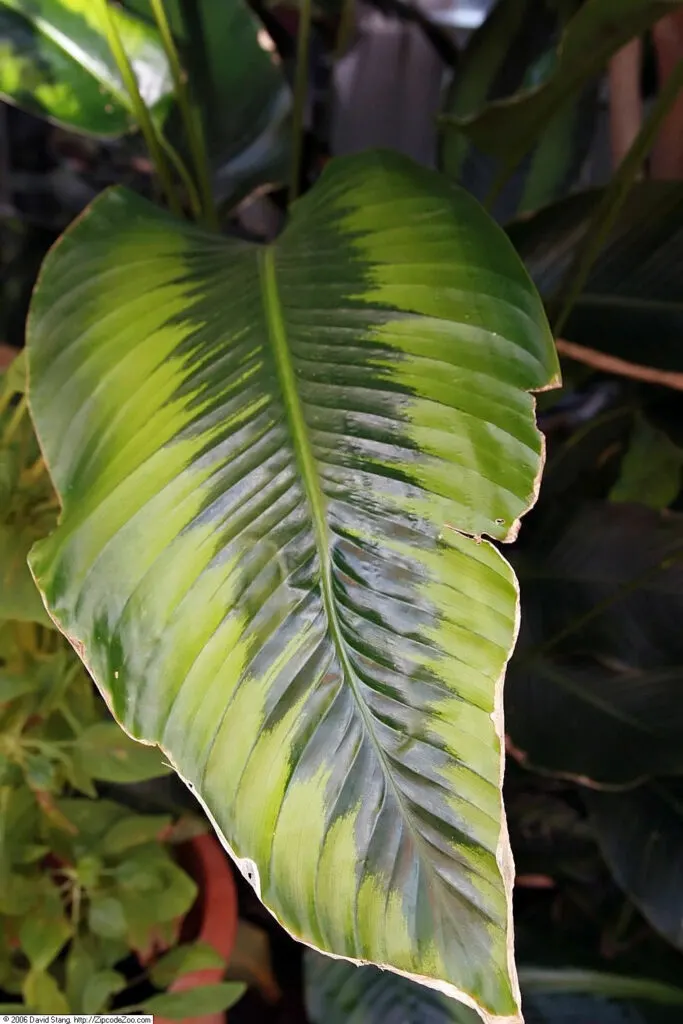
26. Calathea macrosepala
Goeppertia macrosepala is native to south Mexico, western Colombia, and Trinidad.
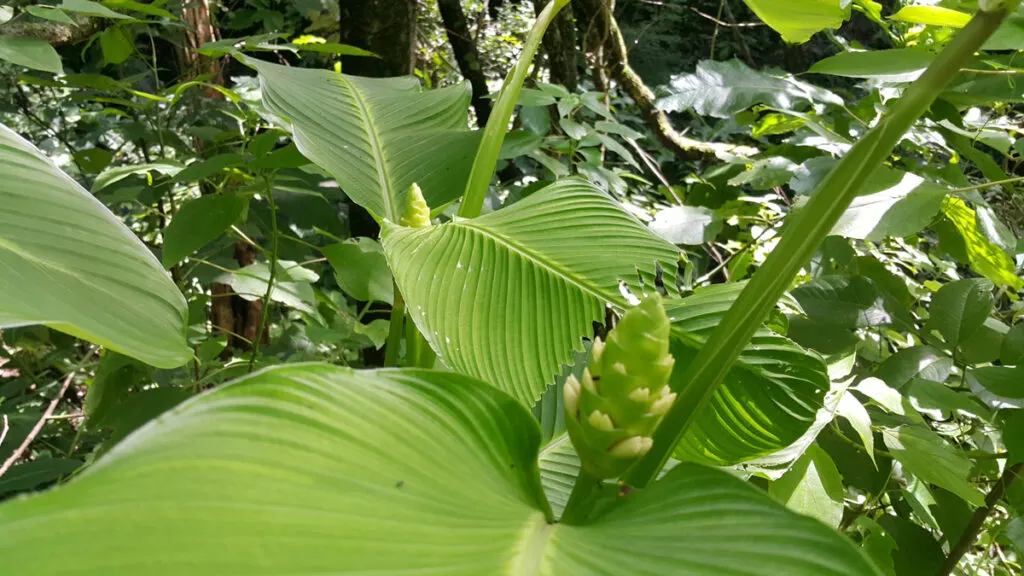
27. Calathea undulata
Native to southern Colombia, Peru, and northern Brazil, Goeppertia undulata is one of the smaller species.
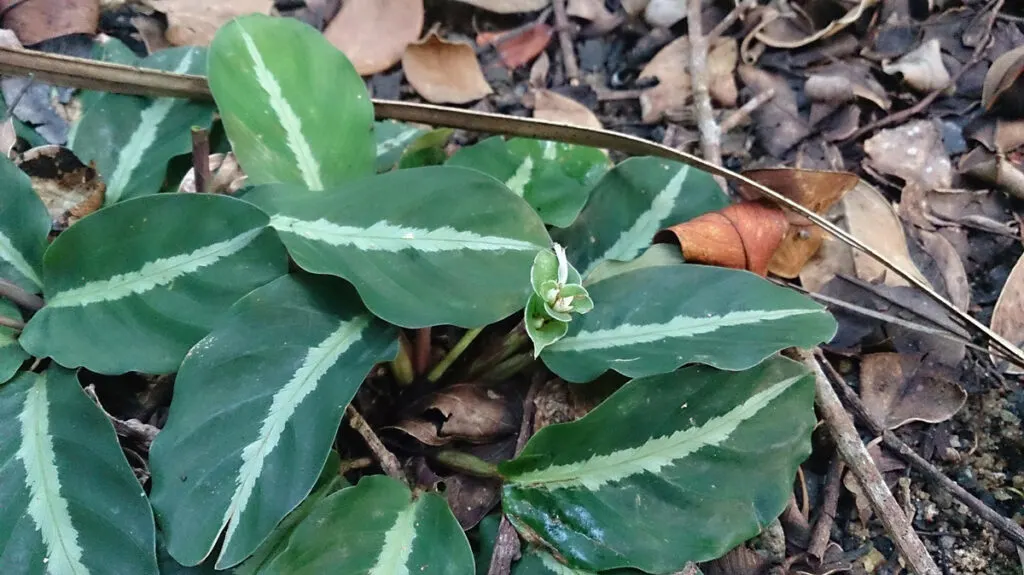
28. Calathea picturata
Goeppertia picturata is native to Brazil and is unique in that it has a solid green band around the perimeter of the leaf, with a pale interior.
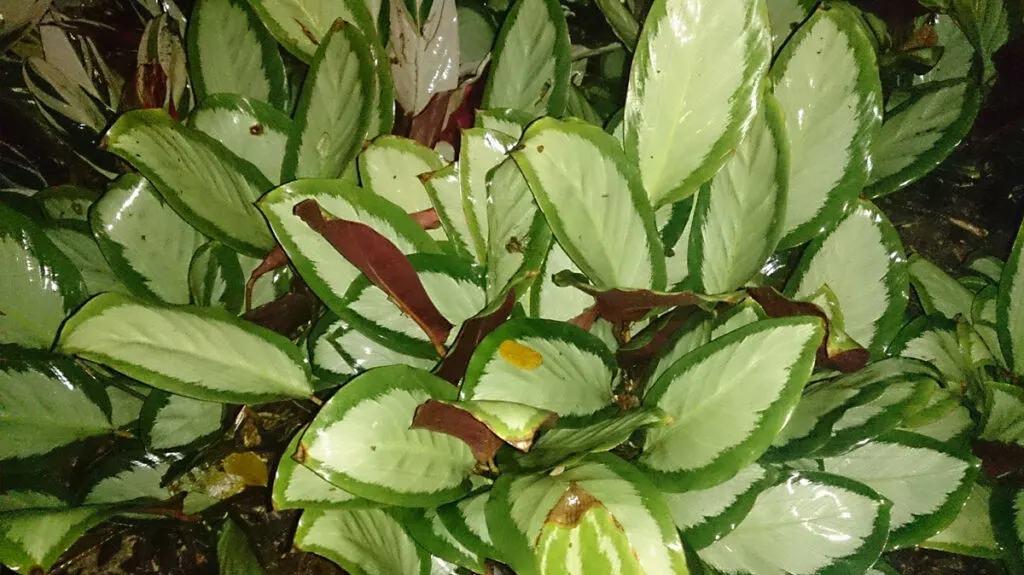
29. Calathea leopardina
The true botanical name of this plant is Geoppertia concinna. The native range is likely to be Brazil.
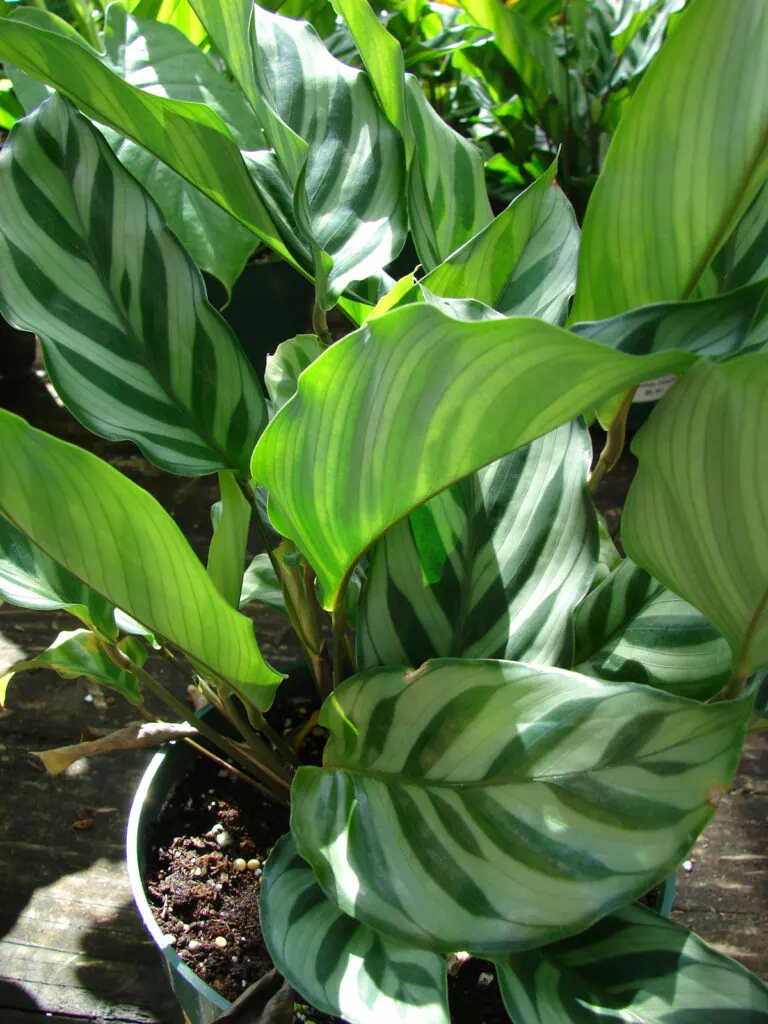
30. Calathea ‘Silver Plate’
This beautiful cultivar likely originates from Goeppertia loeseneri.
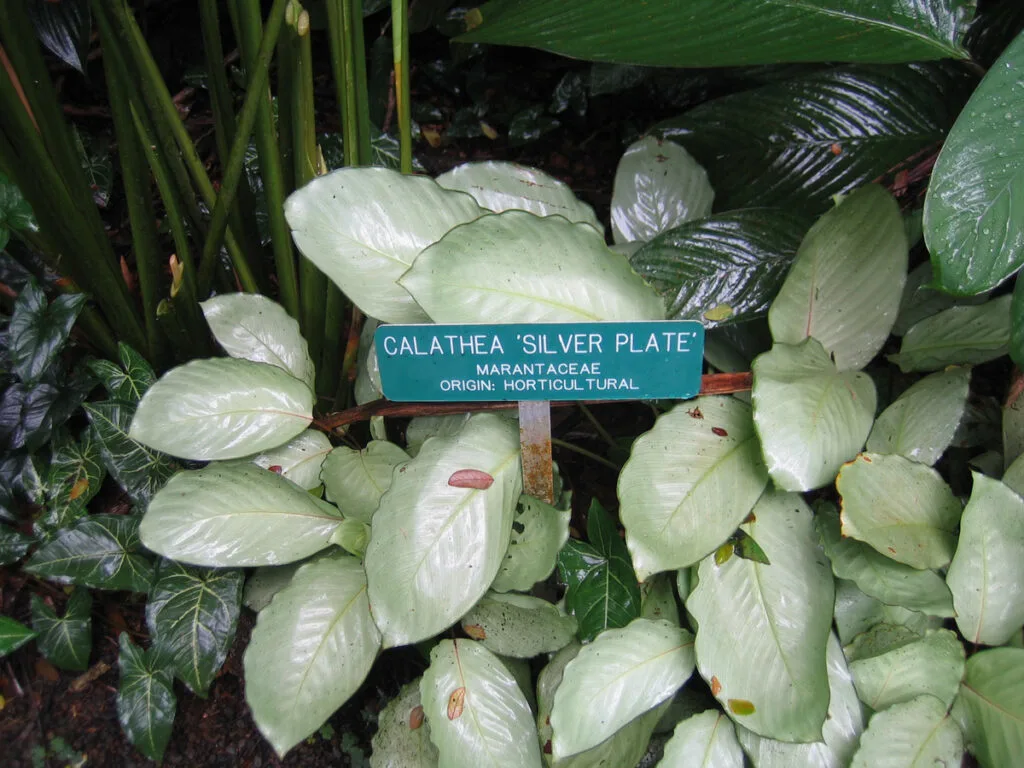
31. Calathea fucata
Goeppertia fucata is native to Colombia and northern Peru. The dark green striped leaves with purple undersides are gorgeous.
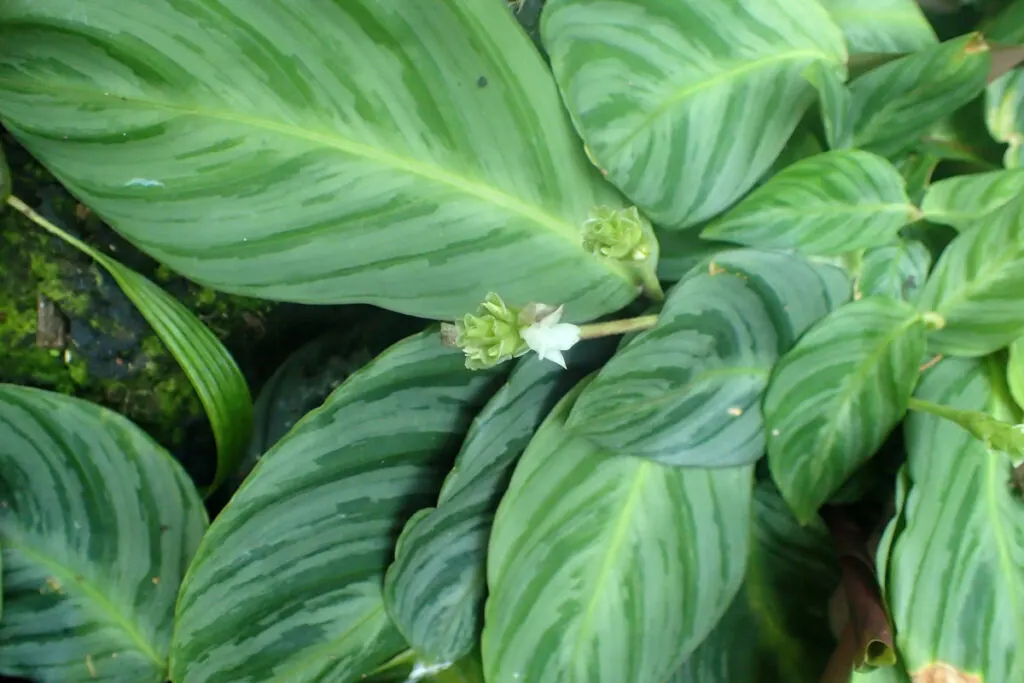
32. Calathea wiotii
Goeppertia wiotii is native to Brazi and is a very small species, reaching a height of about 10-15 cm.
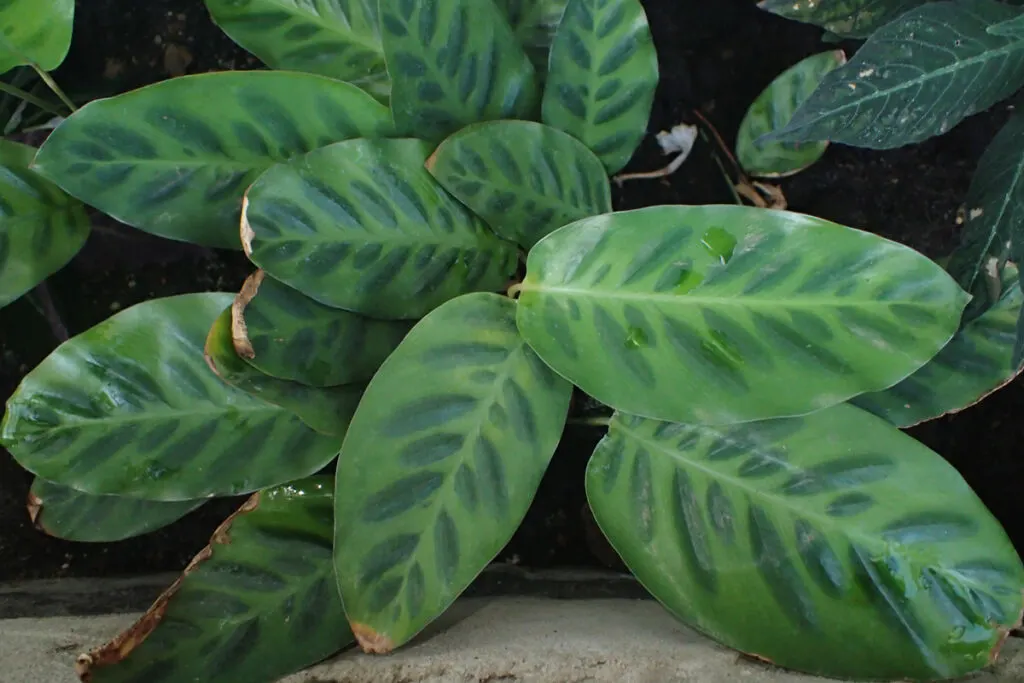
33. Calathea ‘Pink Aurora’
Striking pale foliage with flushes of pink.
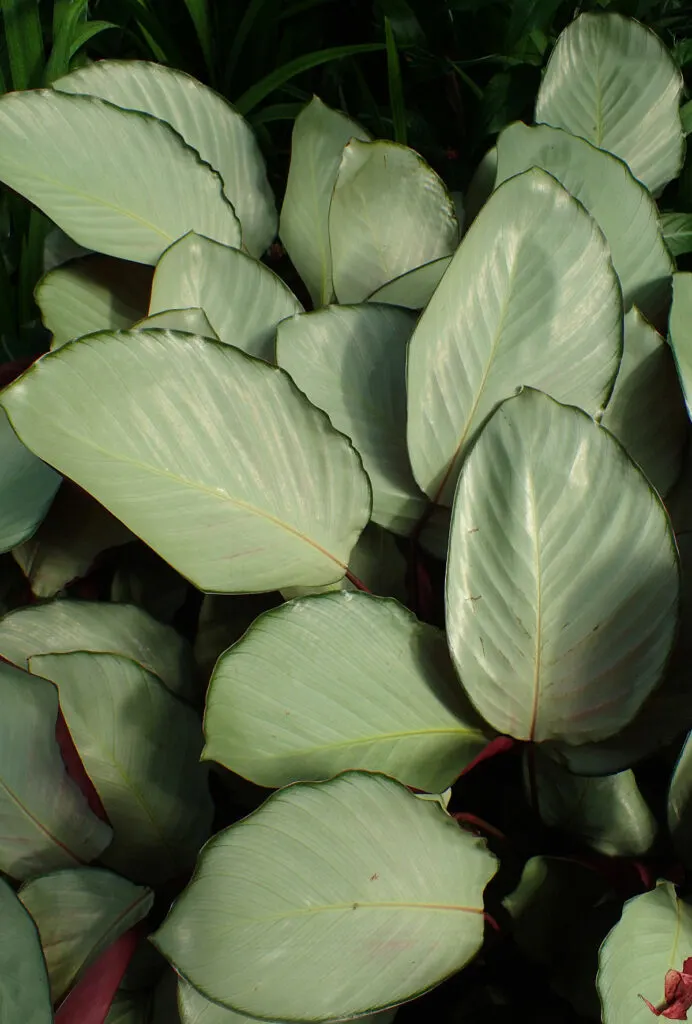
34. Calathea ‘Helen Kennedy’
The peacock-like foliage of this cultivar is just beautiful.
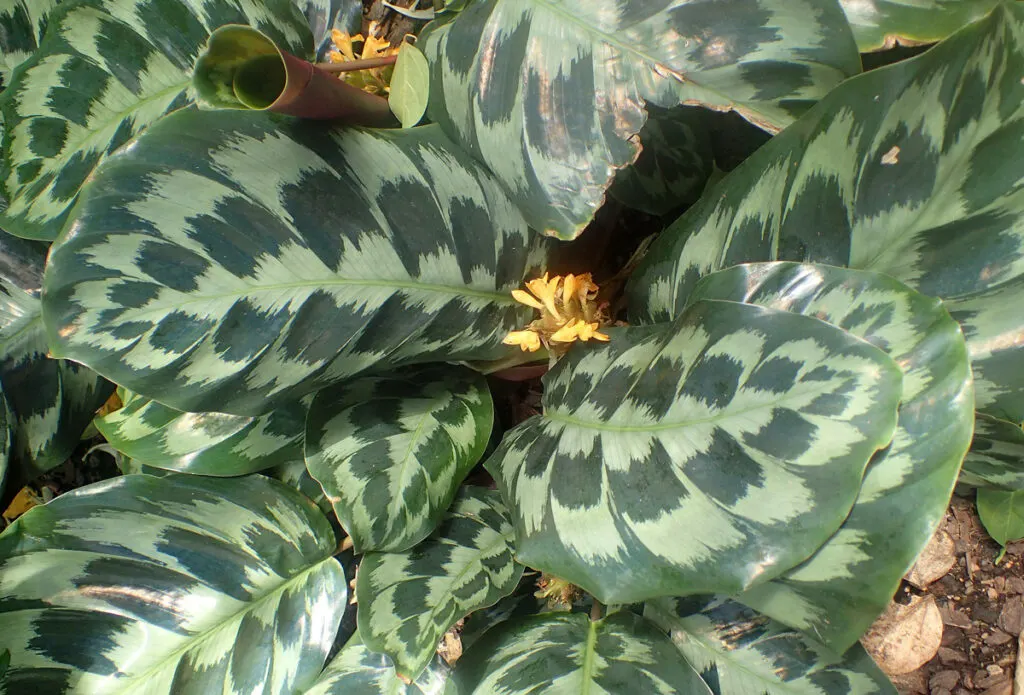
35. Calathea elliptica
Goeppertia elliptica is native to Colombia, northern South America, and northeastern Brazil.
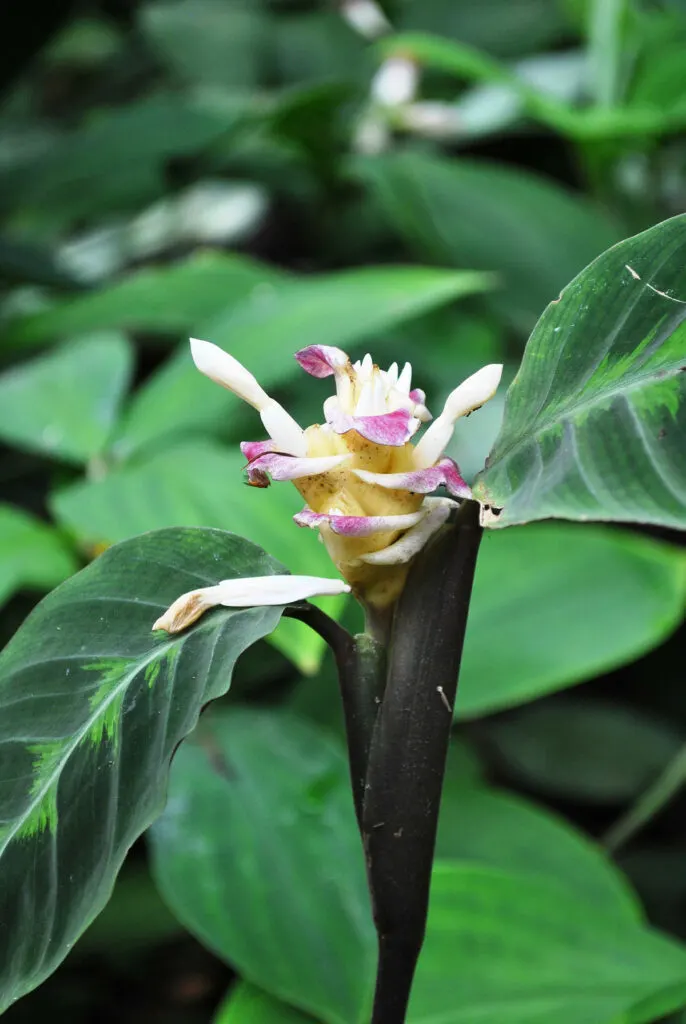
36. Calathea stromanthifolia
Correctly known as Goeppertia stromanthifolia, this species is native to Bolivia.
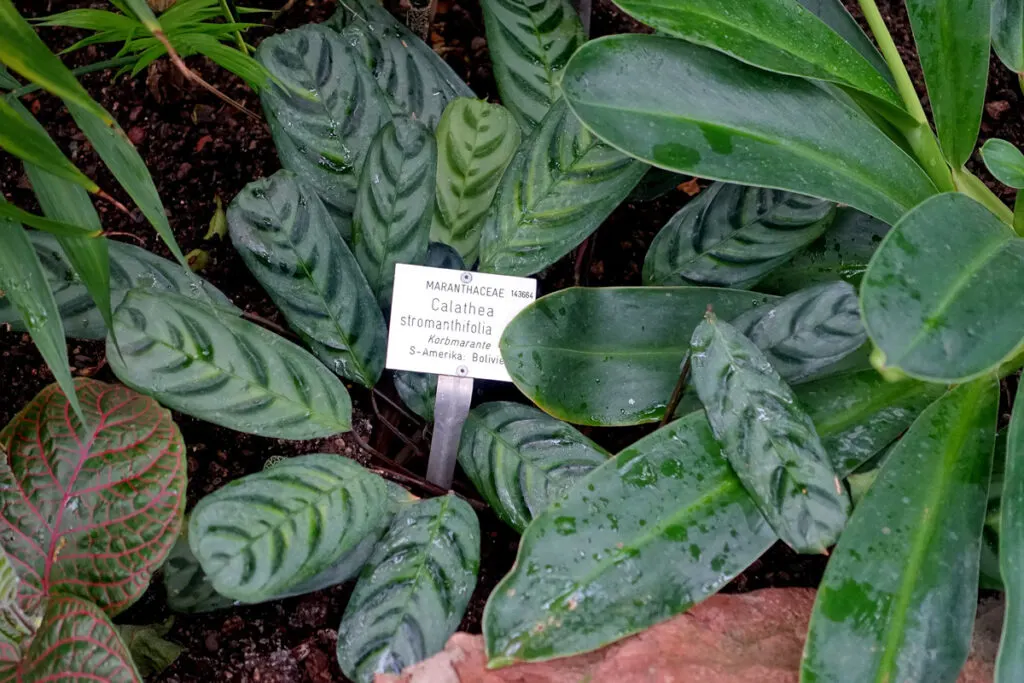
37. Calathea truncata
Goeppertia truncata is native to Brazil.
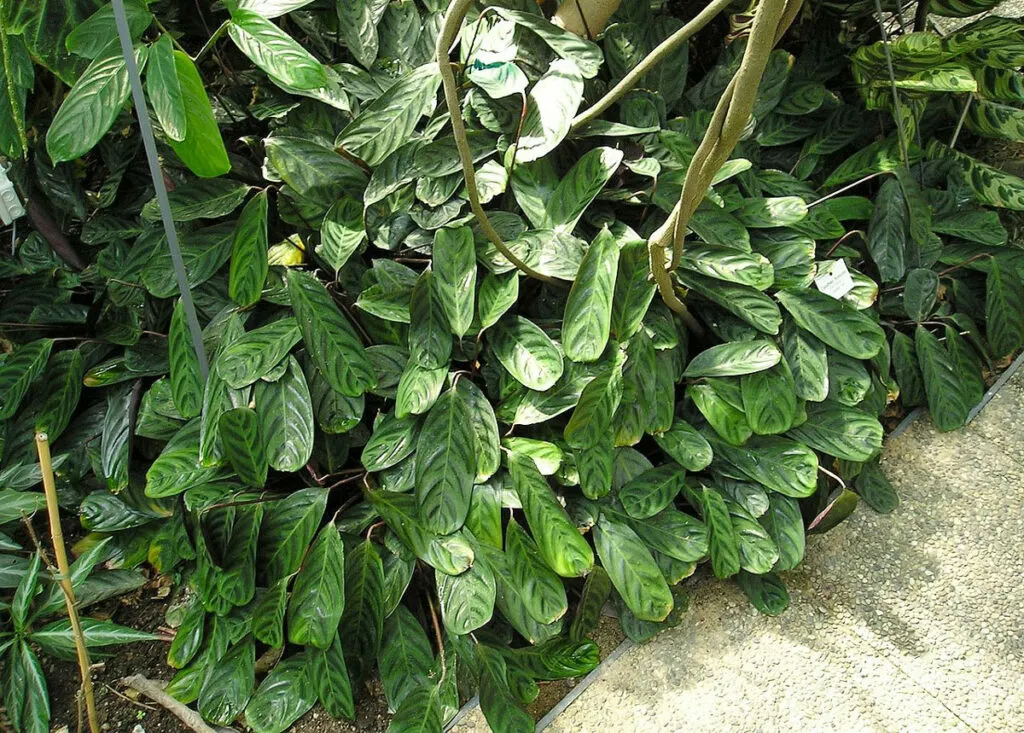
38. Calathea lietzei
Goeppertia lietzei is native to Brazil.
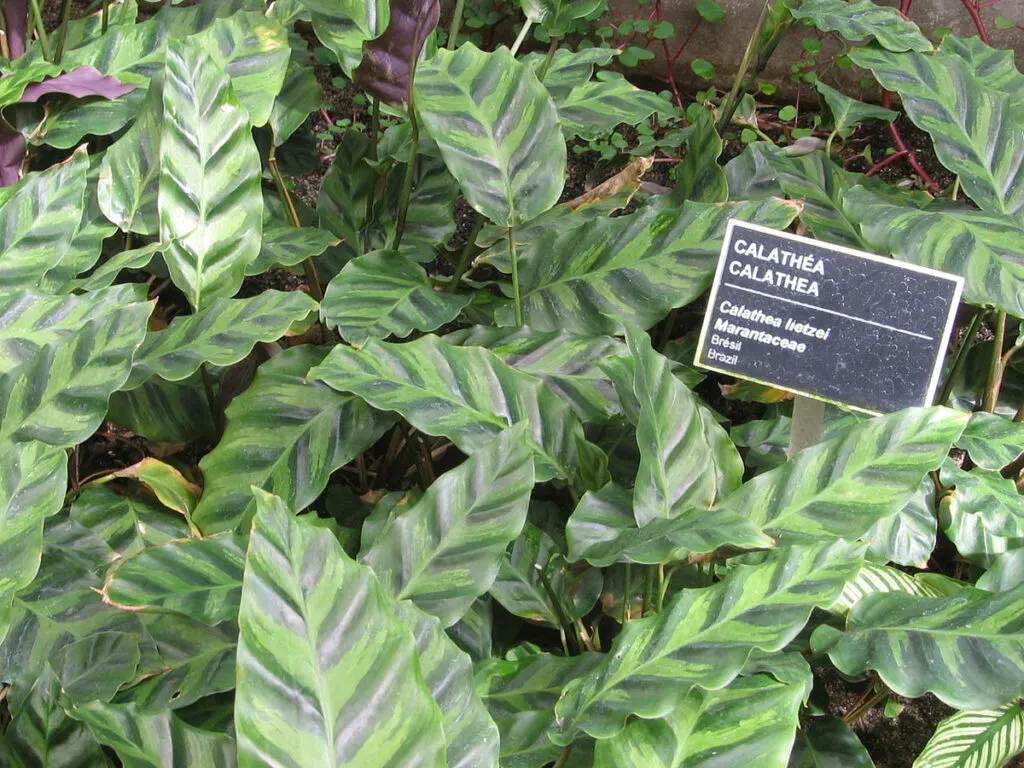
39. Calathea burle-marxii ‘Ice Blue’
Goeppertia burle-marxii is native to Brazil.
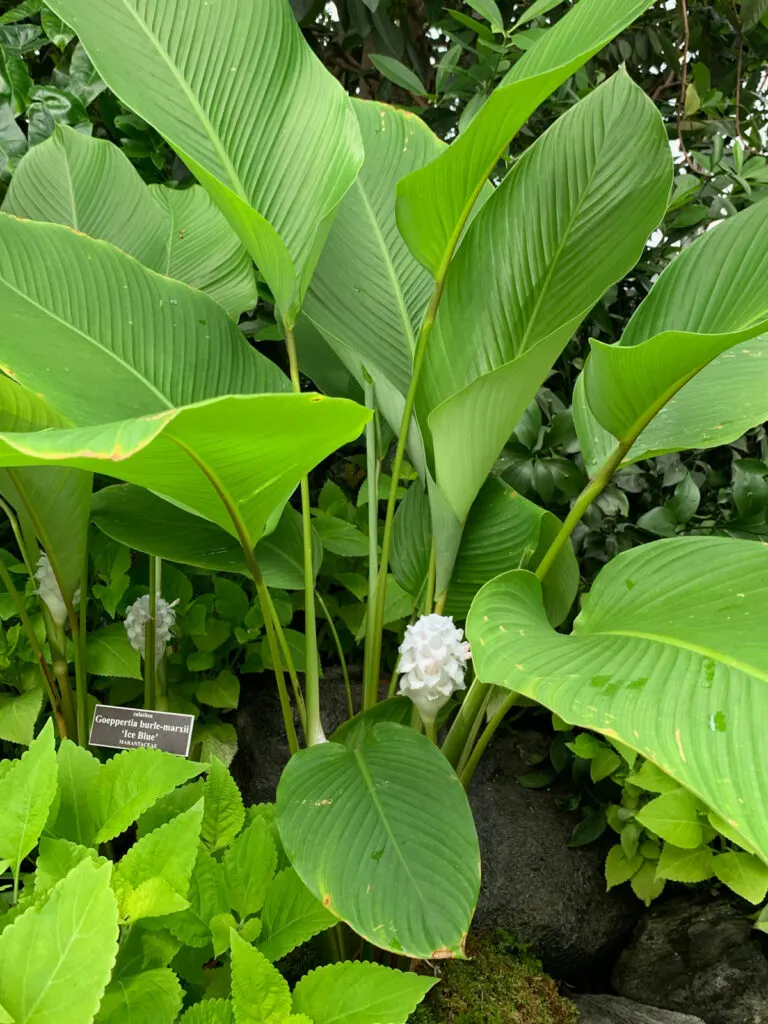
CONCISE CALATHEA CARE TIPS
For more details on Calathea problems and in depth tips, visit my Calathea care blog post which includes tips to minimize brown leaf tips (which is the bane of Calathea owners!)
In the meantime, here is a concise list of what they like.
- Plenty of bright indirect light, but not much direct sun. Situate in front of a window with mostly bright, indirect light. A little direct morning sun is fine, but try not to expose them to much direct sunlight.
- Strive for warm temperatures and a stable environment. These are forest dwelling tropical plants and they like it warm. Avoid any cold or hot drafts from cooling/heating vents.
- High humidity is much appreciated! Check out my blog post for the best humidifiers you can purchase for your plants. Low humidity can make them prone to spider mites as well as brown leaf edges.
- These plants like an evenly moist soil. Nothing will cause your Calathea to crisp up quicker than dry potting mix. Wait until the top inch of soil dries out, and then water. Always use pots with drainage holes.
- The type of water you use can make a difference. If you want to go the extra mile, avoid using tap water and use distilled or RO water instead for best results to help minimize crispy, brown leaf edges. If you don’t want to bother with buying distilled water or setting up a complicated RO water system, don’t miss my post on the best distilled water alternative for Calathea plants. You will thank me for it!
Which one is your favorite Calathea? Comment below. I’d love to hear!

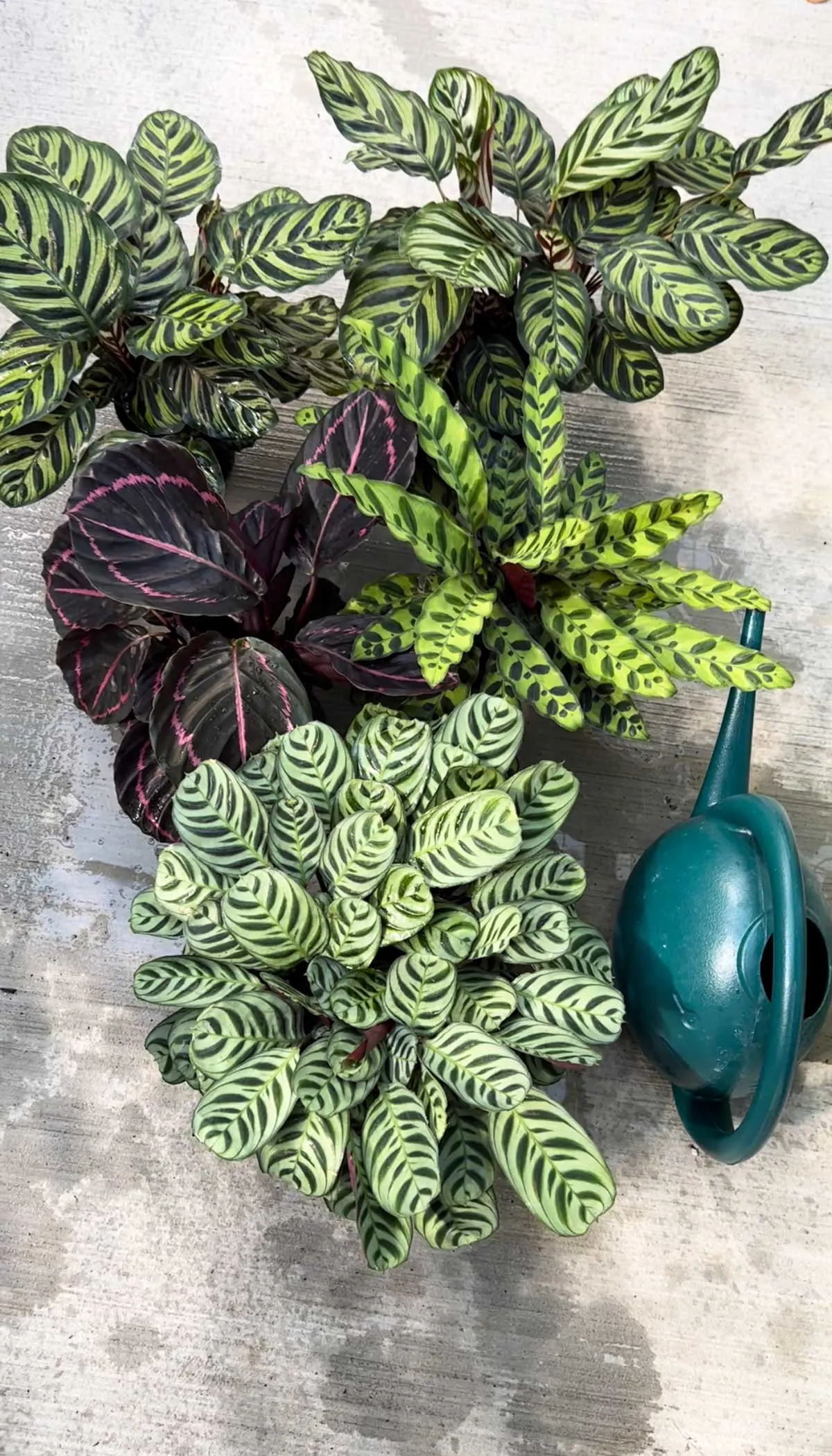
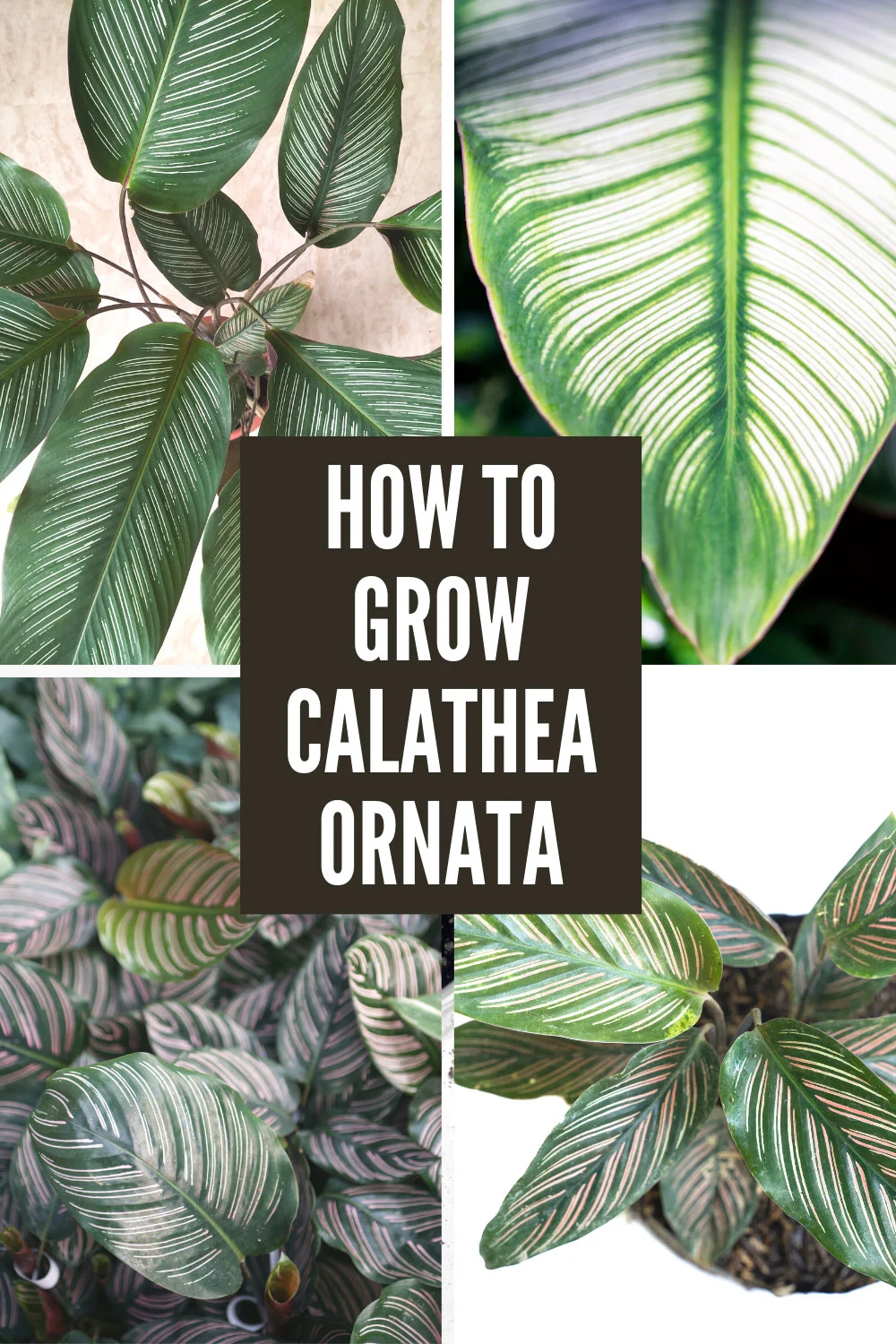
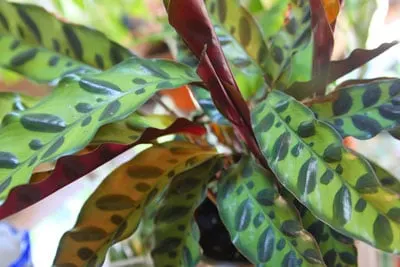
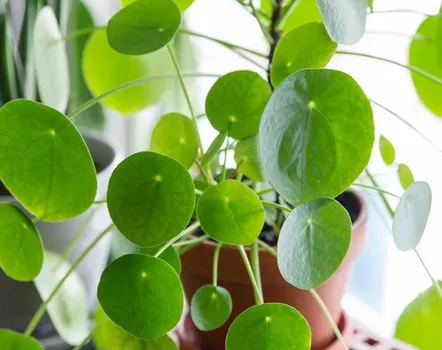
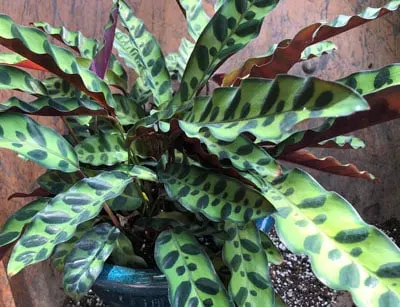
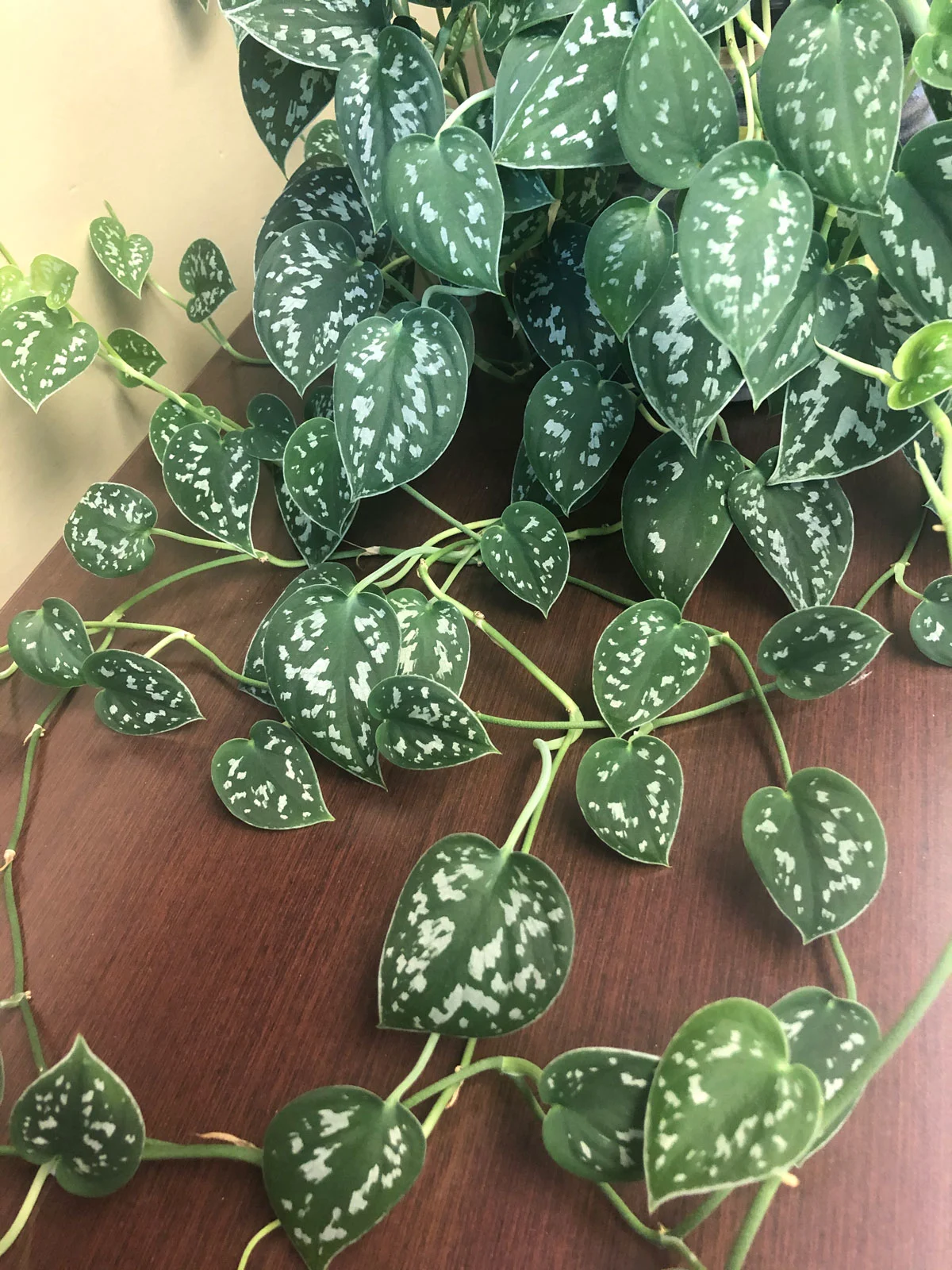
Heather Michelle
Thursday 7th of September 2023
Some of your pictures are incorrect, but learned about a few new (to me) varieties that I need. My favorite plants!!
Raffaele
Monday 11th of September 2023
Hi Heather! Do you remember which ones you noticed were incorrect? We can look into that and make sure anything is corrected. Thank you for noticing!
Amanda
Monday 3rd of April 2023
I just bought a Calathea Dottie on the half-price rack yesterday. It still looks really good, and minus a couple of leaves with brown, crispy edges (which I cut off when I brought it home), I'm not sure what landed it on the clearance rack. Either way, I haven't grown Calathea before, so I'm glad I found your posts on it. The watering information is especially helpful. Thank you!
Kat
Wednesday 31st of August 2022
I have had a Roseopicta in a bedroom with a west facing window, blinds tilted upwards so no direct sunlight. Did really well for about a year then suddenly started to decline. It's now down to 2 crisp brown leaves but it had a new leaf sprout that has also now died. I kept a humidifier in that room along with a temp/humidity meter keeping the humidity above 50%. Recently found out it does not like tap water and I think I needed a more tropical mix so I changed it 40-40-20 potting mix, bark, perlite. I threw in some lava rock for good measure. I think it was too late so, today I purchased a new one, smaller, potted it up and placed it in our bathroom where I know it will get humidity. I also bought a Makoyana and I own a Lancifolia which is thriving in our 2nd bathroom. I will need to divide it soon so it may continue to sit on the sink counter. Thank you for all the helpful info.
Kat
Monday 5th of September 2022
@Raffaele,
Thanks for that tip. It's hard not to. I'm in Central Texas and all my other plants aren't choosey about needing water or the type. This is definitely a challenge to change my thinking but I'm loving it. Question - I just acquired a free division of Setosa but from what I'm reading it is not a true Calathea. but is rather a Ctenanathe Setosa. Both in the family Marantaceae. The particular article I was reading was confusing because the author stated it was the latter but also referred to it as the former. As well as several common names - Never Never Plant, Compact Star Plant, Calathea Setosa, Prayer plant and Zebra Plant. Can you clear up the confusion?
Raffaele
Monday 5th of September 2022
Glad you enjoyed the blog post! And yes, switching away from tap water will definitely help them! And try not to ever let the potting mix go completely dry.
Marlyn Chua
Wednesday 4th of May 2022
The calathea Albertii and Medallion V2 are my favorites! I live the way they consistently fold up wards at night time🥰
Raffaele
Friday 6th of May 2022
Ah yes, those are gorgeous ones for sure!
Trish
Monday 28th of March 2022
I am not sure what type of calathea I have. I wanna say it's a bachemiana but can those survive in the US? I'd love to send you a photo for you to tell me what it is!? It's def not thriving and looking pretty sad.
Raffaele
Tuesday 29th of March 2022
Hi Trish! Please use the contact form on my website, and when I received that email and reply to it, you can attach a photo and I will try and help!